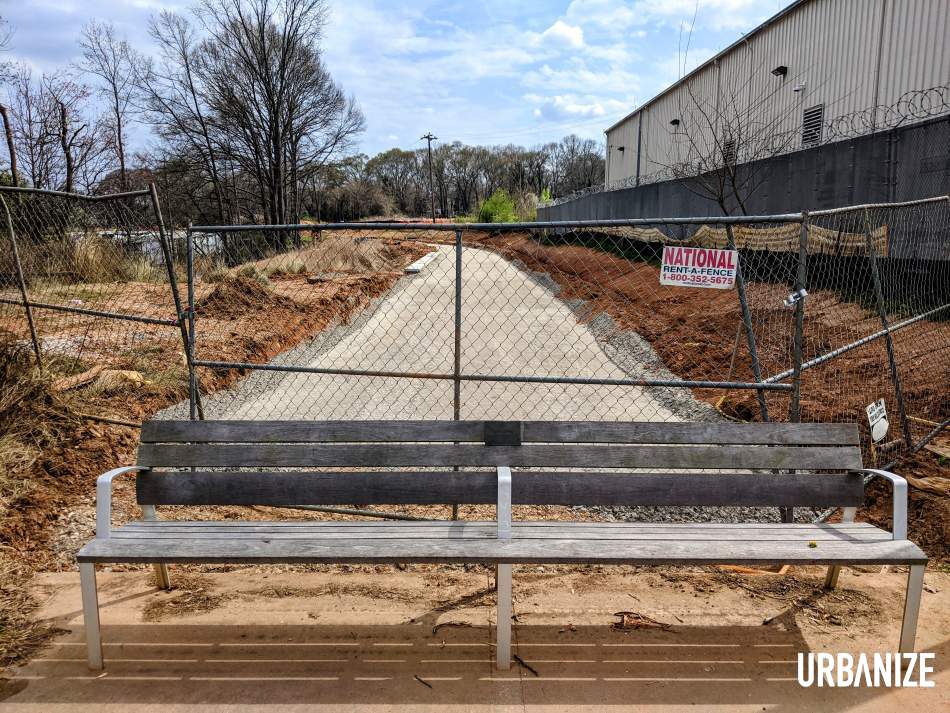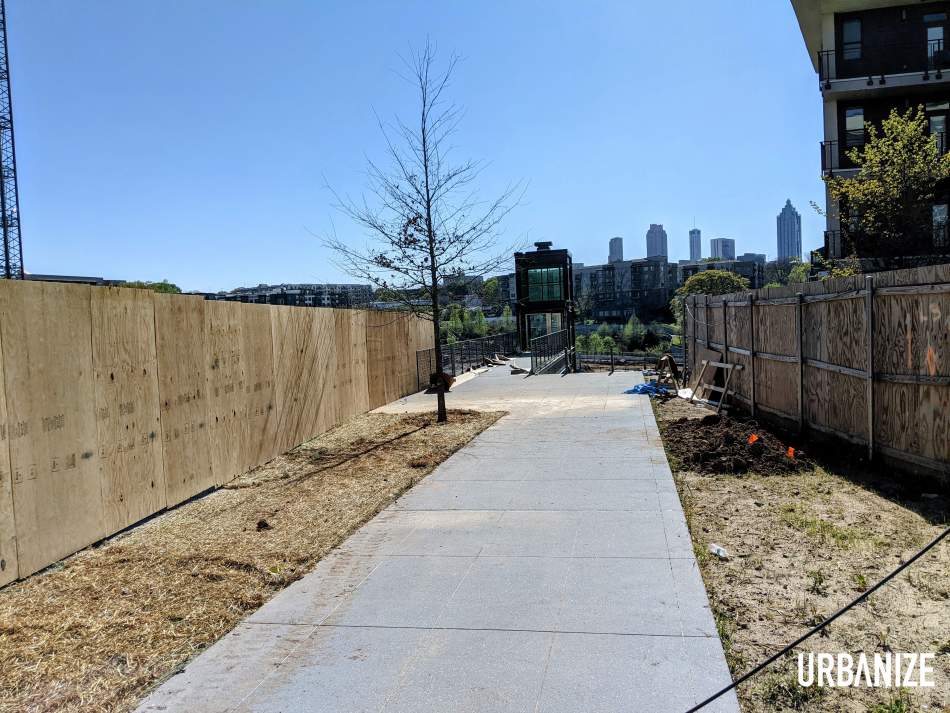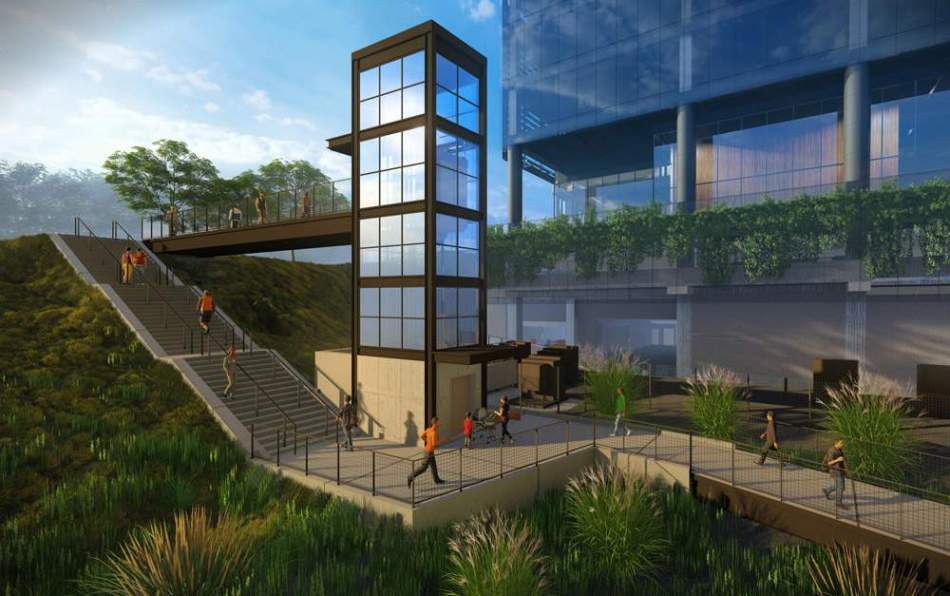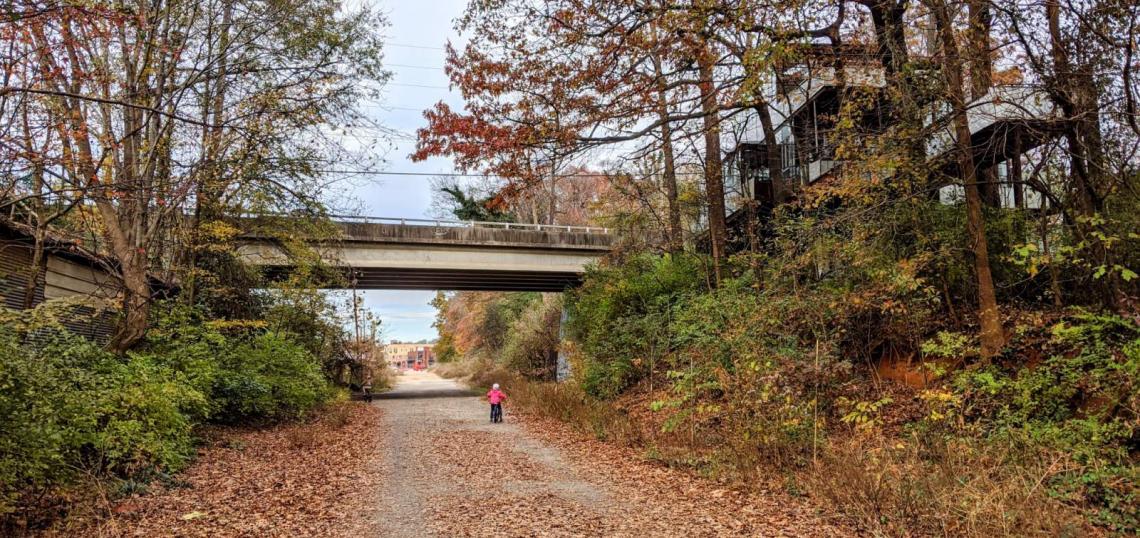The Atlanta City Council’s recent passage of a Special Service District to generate new tax funding is expected to speed the construction process for BeltLine Southside Trail segments where funding has long been a question mark.
That could mean neighborhoods on the southeastern side of downtown—namely Grant Park, Boulevard Heights, and Ormewood Park—could see the paved trail they’ve pined for earlier than expected.
With SSD legislation green-lighted, the Southside Trail phases not being built now—segments two through five—will be moving into construction procurement mode, followed by construction mobilization in 2022 and 2023, according to the BeltLine’s March construction briefing.
Work to bring engineering drawings to 100 percent finished is scheduled to continue for the next few months. Officials expect the Southside Trail segments between Boulevard and Glenwood Avenue in Ormewood Park—segments four and five—will then be put up for construction bids sometime this summer.
That should be followed by actual construction in early 2022, the organization reports.
The remaining Southside Trail pieces that stretch from the Pittsburgh Yards development to Boulevard—segments two and three—will follow that work, as those segments require federal funding, per the BeltLine.
Construction bidding for segments two and three is estimated to happen in fall 2022.
 The Southside Trail's first segment in Adair Park, as seen in mid-March, where it meets today's Westside Trail. Josh Green/Urbanize Atlanta
The Southside Trail's first segment in Adair Park, as seen in mid-March, where it meets today's Westside Trail. Josh Green/Urbanize Atlanta
A viable timeline for Southside Trail construction in southeast Atlanta has been elusive long before the city bought the 4.5-mile, 63-acre stretch of vacant railroad corridor for $26 million three years ago, using funds from a special sales tax.
The federal government has twice denied the BeltLine funding to help build the trail in recent years.
Officials have estimated the cost of building out all five Southside Trail segments to be in the ballpark of $70 million. The SSD alone is expected to generate $100 million in tax revenue from businesses and multifamily property owners near the BeltLine.
That will be combined with an anticipated $250 million in philanthropic contributions, existing TAD revenue, and grant funding to complete the 22-mile loop before 2030, per the BeltLine’s plans.
Meanwhile, as anyone driving south on the Connector can see, the Southside Trail’s first .8-mile segment, branching off the current Westside Trail’s southern tip, has begun pouring concrete. It’s scheduled to open this summer.
O4W BeltLine update
Along the BeltLine’s Eastside Trail, a new front door to popular Historic Fourth Ward Park is expected to open this month.
Jim Irwin, New City Properties president, tells Urbanize Atlanta a public elevator and stairs linking the BeltLine to the park is largely finished and set to debut the last week of April.
 Approach to the elevator off the Eastside Trail today. Josh Green/Urbanize Atlanta
Approach to the elevator off the Eastside Trail today. Josh Green/Urbanize Atlanta
The bike-ready elevator—the first freestanding lift along a BeltLine path—replaces the winding Gateway connection that was too large to fit with New City’s 12-acre redevelopment of former Georgia Power property, called simply Fourth Ward project.
The glass elevator is meant to reflect those found along New York City’s High Line. For bicyclists, the stairway will include runnels—channels for bike tires—for transporting two-wheelers between the Eastside Trail and park.
 Rendering of the elevator and stairs connection at the project's base. Courtesy of New City Properties
Rendering of the elevator and stairs connection at the project's base. Courtesy of New City Properties
On what’s considered the largest workable parcel of BeltLine-adjacent land left, New City’s plans call for a modernist mini-city that could cost upwards of $1 billion and require a decade to finish.
The first component to go vertical will be two mid-rise office buildings neighboring the Eastside Trail, connected via a skybridge, where digital marketing giant Mailchimp will uproot its 300,000-square-foot headquarters from Ponce City Market.
Those two office buildings are scheduled to open by the end of 2022.
See the gallery above for more visual explainers.
• The Atlanta BeltLine's Southside Trail is beginning to exist (Urbanize Atlanta)






